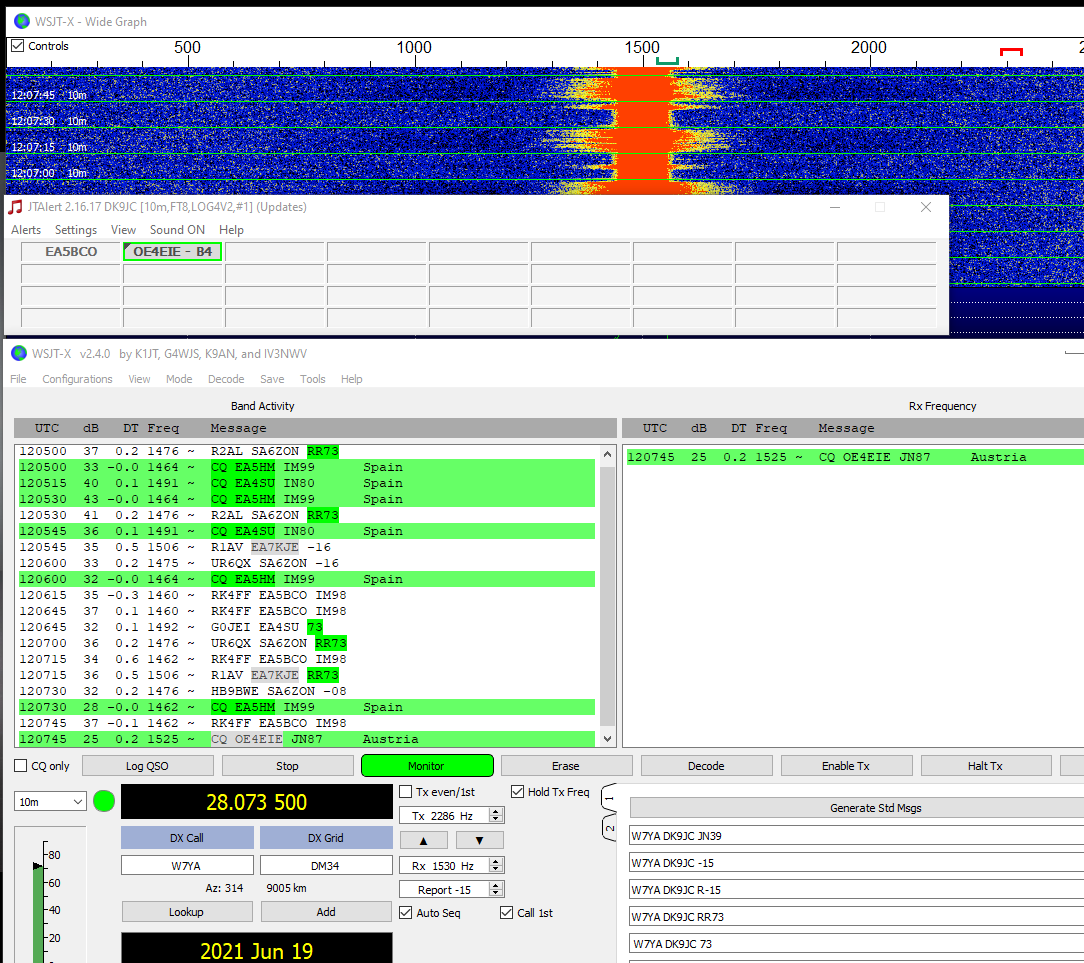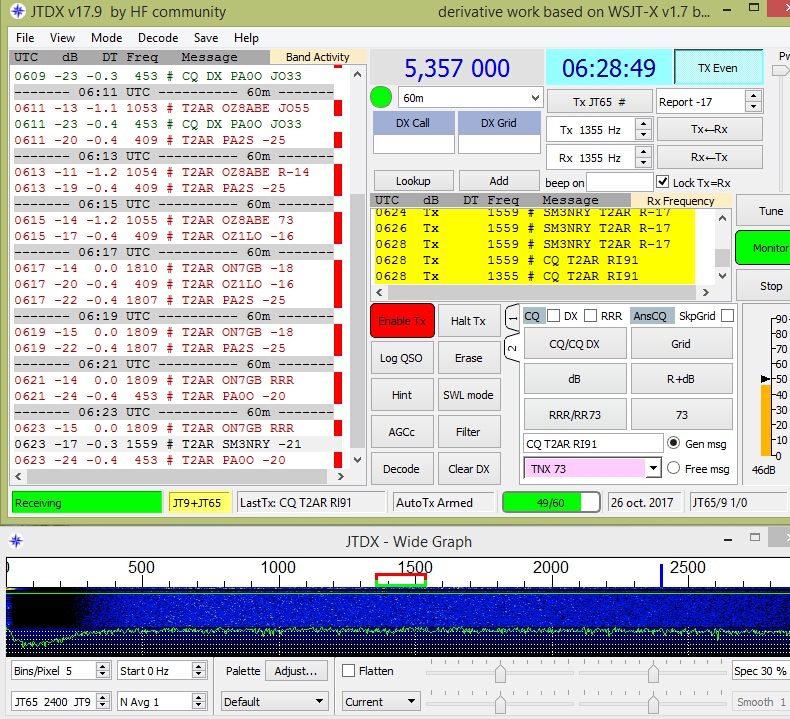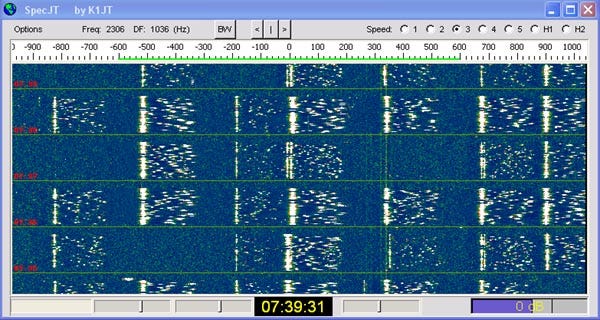
The auto sequence feature is nice, but is also a drawback in the sense that working FT8 in auto mode does not require much from the operator and gets boring after some time. When talking about “user experience”, FT8 feels a bit nervous and does not leave much time to decide who to call on a busy band. Again, the longer transmissions are expected to be responsible for the better reliability.


Having made numerous QSOs with JT65, it seems that fading affects JT65 less.
#Jt65 bandwidth software#
Incredible, how the software decodes so well, one can hardly see the traces! The green and orange markers indicate the sync tone of the transmissions. The picture shows CQs from ZS2ACP with QRM from over the horizon radar (OTHR, vertical lines). ZS2ACP on Jan 1st, 2017 – 5290 kHz – Waterfall and decoded messages (inset) This illustrates that the 6 dB estimate is not far from the truth or maybe even a bit optimistic.
#Jt65 bandwidth series#
On 60 metres, stable series of CQ’s from ZS stations were seen with about -27 dB and when taking the 6 dB difference into account, it would require FT8 to be stable at around -21 dB, which is clearly not the case. As said, with JT65, good contacts were made with weaker signals, even close to -30. The test illustrates that the practical difference in sensitivity between FT8 and JT65 is roughly 6 dB even though the theoretical difference should be less. The results confirm that FT8 is more sensitive to QRM. With one dB attenuation added, equivalent to -23, decodes were lost completely. During the day, FT8 was stable up to -22. The evening results with FT8 showed that decodes were lost below -18. The daytime results were better and stable up to -28 (with hinted decoding). JT65 decodes to nearly -30 were seen, but below -25, the evening tests had lost decodes. The second test was during daytime with less QRM thus effectively white noise. One during evening hours with some static and man made noise from various ‘unlicensed’ transmitters. During the tests, only the noise was somewhat realistic, whilst the transmission path was only a bunch of attenuators:-) In the real world, fading and multipath effects, for example, affect the signal. After adding attenuation, the reports nicely tracked the added attenuation values within about 2 dB, confirming that the software reports the signal to noise ratio well. This resulted in (near) -1 reports for JT65 and FT8. With a spectrum analyser, the noise level was measured in 3 kHz bandwidth and a JT65 or FT8 signal was injected at the same level. The output of the combiner was connected to a receiver with a second computer with JTDX (for JT65) and WSJT-X for FT8. The transverter output of an IC7600 was used, because the relatively low output level prevents unintended coupling between transmitter and receiver. The other input was connected to the transmitter via attenuators.

The signal from the antenna was fed to a combiner. To establish the decoding margin, real world background noise on the 60 metre band was used. Lower values are seen, but it seems that the FT8 decoding threshold is more sensitive to QRM than JT65 which does not surprise, given the shorter transmissions. Without JT65 it would not have been possible to contact stations like 5W1SA and 3D2AG on 60 metres with a modest setup and a challenging man made noise environment.īut with FT8, signals below about -18 become unreliable. Decoding up to -30 dB and very reliable under difficult conditions, like overlapping stations (JT65, FT8 and even PSK), multiple stations calling on the same frequency as well as other interference from various sources. One could also say that the aim was to try to compare the reliability of real world amateur radio transmission circuits.įor the author, JT65 with JTDX has been the ultimate combination. The author compared JT65 and FT8 in real world situations with fading, interference, static, overlapping stations and so on. It has to be said that Franke and Taylor (FT) have done a tremendous job with the development of various weak signal modes and FT8 is certainly a valuable addition to the ‘line’ of JT modes. It was adopted fast by the amateur radio community and it is clear that FT8 overtook JT65 quickly.


 0 kommentar(er)
0 kommentar(er)
